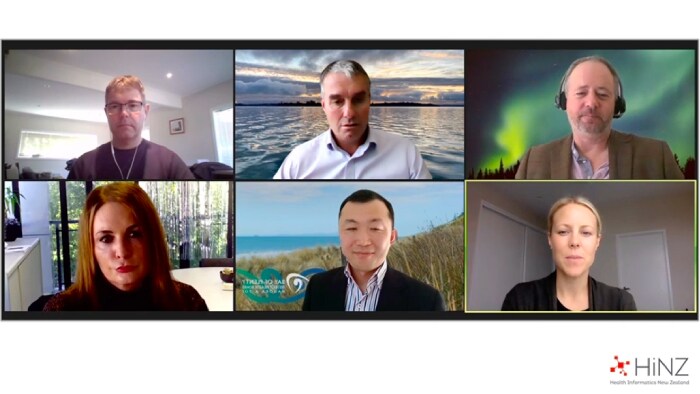The global pandemic has challenged almost every aspect of our lives, with fundamental shifts in everyday life now self-evident. The pandemic has acted as a digital accelerant across healthcare, much as it has across other sectors, as practitioners look to overcome unforeseen challenges to traditional workflows. An interesting outcome of COVID-19 has been the realisation that many of the long-term barriers to robust healthcare system delivery can be solved using these recently adopted technologies, as resilience begins to centre on digitising traditional touchpoints. In under 24 months, digital touchpoints have become expected by consumers and patients, with digital transformation initiatives leading to higher interest and engagement in services. In response, decision makers across a range of industries have turned to technology to help solve problems stemming from changing demand and expectations. Healthcare has been no different. Traditional healthcare workflows operating in New Zealand have been challenged to innovate in the wake of a global pandemic. Industry-wide, we have seen the tangible impact of technology adoption in ensuring continuity of care. We’ve already seen evidence of best practice digital adoption and engagement across the New Zealand healthcare landscape in response to COVID-19. These new developments in the sector, including the integration of existing technologies, adopting new approaches to delivering healthcare and stronger collaboration between industry leaders, have no doubt been an integral part of the country’s response to the pandemic. Despite the recent advancements, a robust plan aimed at achieving long term change is required to drive sustainable digitisation for New Zealand’s healthcare industry.
A local perspective What a future national digital healthcare system in New Zealand would look like, and what these services would need to provide, in order to benefit both patients and practitioners, is not yet clear. The Digital Health Strategic Framework [2] outlines some of the ways technology can impact the healthcare landscape in New Zealand and empowering patients and supporting clinical staff are two of the most definitive reasons to move to new, digitally led ways of working, as highlighted by Darren Douglass, GM Digital Strategy and Investment at the Ministry of Health. Ensuring the sector adopts relevant digital solutions has the potential to rapidly expand access to care, while equalising patient and clinician equity and building a system that responds to the needs of all parties. Telehealth services are a testament to this, increasing access to care for patients, while working to effectively minimise the pressure on hospitals and clinics. More importantly, it’s played a major role in responding to peak periods of activity, as reported by Waitemata DHB conducting 10,000 telehealth appointments in one week in August [3], a volume that would be unachievable using strictly traditional models.
New Zealand’s leading CIOs joined a roundtable, hosted by HiNZ [1], where they discussed barriers to the adoption of digital health solutions, as highlighted by healthcare leaders in the 2021 Philips Future Health Index Report. As part of this discussion, Stuart Bloomfield, CIO of Waitematā DHB & Counties Manukau Health, made note of the positive advancements that have taken place during the pandemic period, in particular the integration of technologies enabling greater sharing of information, currently taking place between health systems. Looking more broadly to long-term industry change, leaders want to diversify their adoption of digital solutions to align potential benefit with those most positively impacted by the innovation.

Scaling innovation Industry stakeholders, including future governing bodies HealthNZ and the Maori Health Authority, must work together to both develop a robust method of measuring the impact of best practice solutions, and showcase the examples of best practice currently operating in the country. This programme of work must incorporate a plan to engage all stakeholders proactively in order to further promote and scale digital understanding and education. Digital solutions that are being successfully implemented in New Zealand can become case studies to help scale adoption across both the public and private sectors and information sharing between stakeholders is key in showcasing the true capabilities of digital health solutions. More importantly, and as echoed by Steven Earnshaw, 3DHB’s Chief Clinical Innovation Officer & Acting Chief Digital Officer, this includes involving clinicians in the development process of new solutions, to ensure that as the people using them, new systems respond to their needs as care providers. A co-design approach like this ensures that the right solutions are deployed but drives engagement of the on the ground with healthcare leaders. When engaged effectively, clinicians can also play the role of patient advocate, spurring the widespread digital solutions by ensuring they fit patient demand. As the direct connection to patients, they are more aware than anyone of how patients are interacting with the healthcare system and these insights can be used to create user friendly, patient-centric digital platforms. As Richard Li, CIO of the Bay of Plenty DHB stated, the goal for digital transformation is to improve the patient experience and support the care journey from end to end. The systems need to ease the process and be designed in a way that encourages usage that ultimately creates a value add.
Despite the undoubted success that has been the adoption of telehealth, it continues to represent a small pocket of success, siloed rather than a sign of broad adoption. Ensuring solutions like this can scale is imperative if there is to be a clear and cohesive digital health framework put into place by New Zealand’s industry leaders.
The art of the possible The challenge of COVID-19 has spurred innovation across the New Zealand health sector, and as stated by Anne Speden, Executive Director Digital Engagement for Hawke's Bay DHB, the silver lining of COVID-19 is the art of the possible. It’s instilled a sense of intrigue amongst patients and practitioners in the capabilities of digital health solutions. Digitisation faces challenges to widespread adoption on a scale similar to that of a pandemic, with significant barriers preventing best practice adoption nationally. Partnerships with subject matter experts, and information sharing across the whole healthcare industry can help overcome barriers and support finding solutions that benefit both patients and industry leaders. With a robust healthcare system already existing, and the foundations in place for a scalable, digital change, New Zealand is positioned to capitalise on the opportunities that digital health solutions. As a result, New Zealand’s eventual approach to a national digital health system could provide a roadmap that can be followed by the rest of the world.
Beyond creation of these solutions, of critical importance will be the in incentivising behaviours of adoption, both for digital health solutions and value-based care. This also includes playing a role in addressing issues that are current barriers to adoption, including limited experience using these updated models of digital care delivery. Supporting digital literacy among healthcare leaders and ensuring a collective knowledge base is achieved will be a defining factor in creating a national digital healthcare approach. By implementing more robust digital training and education initiatives, healthcare leaders will have a framework of knowledge to lean on during the transition to digital workflows.
Watch the CIO Roundtable: adopting digital technologies in health – barriers and solutions. [2] https://www.health.govt.nz/our-work/digital-health/digital-health-strategic-framework












